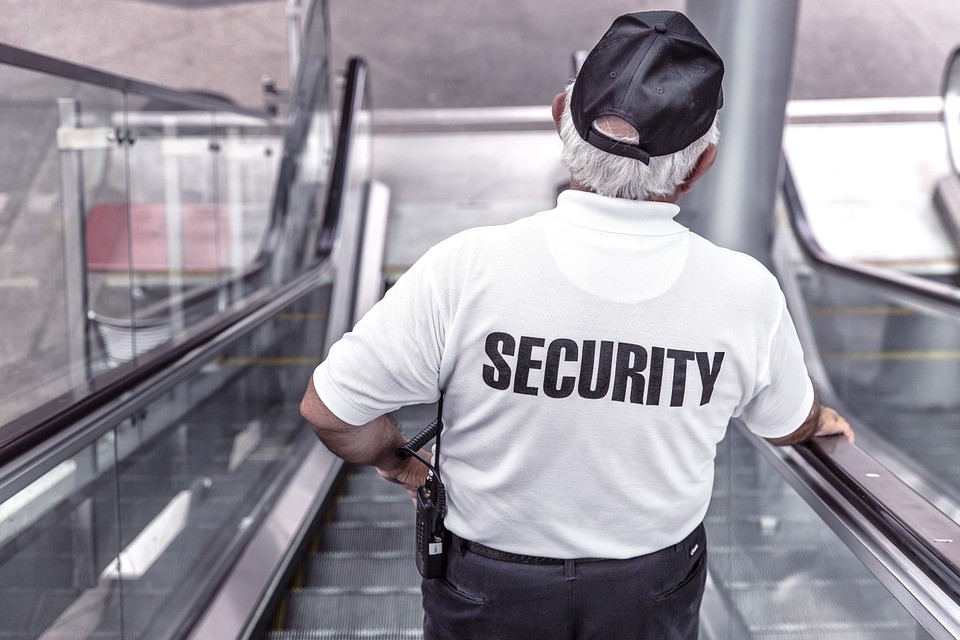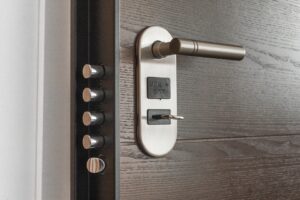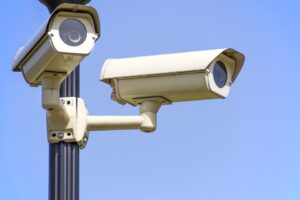Patient Safety Week: How Hospitals Can Maintain Their Safety and Security in Unpredictable Times

As we review Patient Safety this week, let’s dial down on the safety and security of the patient’s environment- the medical facility. How might best practices help hospitals to remain safe and secure places of healing, especially in these unpredictable times?
The physical security and safety of the hospital environment is as paramount as its state of art equipment. Hospitals are fairly open environments with non-stop movement and activity. Over twenty-four hours, there is continuous traffic of carts, beds, people; that flow between different hospital sections, departments, and buildings.
Much like other buildings- hospitals have access points that are crucially important to their security. However, medical facilities are different from other structures. They need to balance safety and security with being a caring home-like environment.
Building a security plan for your hospital
Upon driving or walking on to a hospital campus, you are interfacing with its security system; from its access points including the periphery carparks, remote buildings to walking through the main entrance.
But how do you apply a security plan from start to finish? Let us start with security measures on the periphery, outer regions of the property.
Firstly, what is the perimeter of a campus?
Hospitals and medical facilities have different designs and differently shaped buildings. They also have different campus sites, parking lots, entrances, and exits. According to the NFPA, a guide that outlines important principles of campus security, the definition of the perimeter is the campus outer circumference, which includes parking lots and buildings in remote locations around a hospital site.
What are the detection products? These include everything from access points to security cameras. All peripheral areas, including carparks and passageways, need to be well lit. To bulk up security on the periphery of the campus; Bob Stosse, writing for Campus Safety, recommends door position switches or latch bolt monitoring on all facility outside openings.
 The importance of hospital doors
The importance of hospital doors
To implement an effective security system, efficient hospital doors are needed. The maintenance of hospital doors is critical for the entire security and safety of any hospital.
Continuous hinges ensure the door and frame are perfectly lined up, allowing for added privacy with no gaps between door and frame. They also instantly minimize pressure when continuously opening and closing a door, as well as, supporting the entire length of the door. With the hinges and hardware inaccessible, it increases security by decreasing the likelihood of tampering and prying.
Traveling down a hospital’s corridors
Every day, visitors and patients move throughout all areas of a hospital. Medical staff and patients need easy access to corridor doors, especially if there is an emergency. Placing push or touchless actuators within hospital corridors enables an uninterrupted (as possible) throughway throughout a facility.
One idea is to install an actuator a long distance before a door opening. Allowing the user to activate the actuator earlier means that by the time they get to the door, it is open. This serves to both minimize the time it takes to move through the hospital and also to limit wear on doors and equipment that get ‘pushed’ through slow opening doors.
What are the key hospital departments to keep secure and safe?
Let us start with a department known as one of the busiest and fast moving places in a hospital: The Emergency Department.
Emergency Department
The Emergency Department(ED) is a mass of frenetic activity; there is almost never a quiet moment. All day and night, droves of people enter and exit this department, increasing the difficulty of tracking visitors. Today, occupants of the ED need to remain alert and be aware of the following issues:
- Lockdown situations to minimize danger.
- Heavy use and mishandling of doors.
From the ED to another key department of a hospital: women’s and children’s services.
Labor and Delivery, Neo-Natal Intensive Care (NICU)
Security and safety is a high priority for this department. So is ensuring a warm and nurturing environment for mothers and their babies.
Some important considerations in this area include:
- Providing controlled access and monitoring of people coming and going from this department.
- Minimizing unwanted noise.
From the crucial role of hospital doors in a facility’s departments to state-of-the-art cameras:
 What are the latest trends in surveillance camera technology, and who is using it?
What are the latest trends in surveillance camera technology, and who is using it?
Larry Anderson, editor of SecurityInformed.com and SourceSecurity.com, highlights some of the most modern video surveillance equipment.
The University of Arizona Medical Center wanted to both grow and concentrate video surveillance using an IP system of multisite monitoring.
The UAMC implemented Pelco’s Endura IP video management system (VMS) with NSM5200 network video recorders to integrate all video cameras on a singular platform. This video technology allows security staff at each hospital site to see daily events as they occur across the system. The health system also installed 150 Sarix and Sarix with SureVision Technology IP Cameras in their behavioral health tower, in the ER, and by the majority of their entrances and exits.
Pelco’s open platform feature enables hospitals to use their existing systems, such as alarm monitoring or access control systems, within a newly constructed building or in existing infrastructure.
Multi-Sensor Panoramic View Cameras are shown to reduce maintenance costs and the number of cameras needed. They increase video coverage and enhance quality of hospital video surveillance systems.
A variety of Medical facilities use Pelco’s 180-, 270- and 360-degree cameras to keep close watch on waiting rooms, corridors and hospital parking facilities. According to Anderson, these cameras “allow the user to pan, tilt or zoom virtually within the picture view, (to isolate incidents) happening in real time” or after the event.
 Time to tighten hospital safety and security
Time to tighten hospital safety and security
For patient safety and security, the first step is to implement an effective security system. Starting with ensuring car parks have sufficient lighting to implementing sophisticated security cameras. Points of access need well-maintained doors. The main priority unique to hospitals is ensuring that there is a balance between security and creating an environment that patients feel at ease in; a welcoming healing environment.
By: Jonathan Gordon
